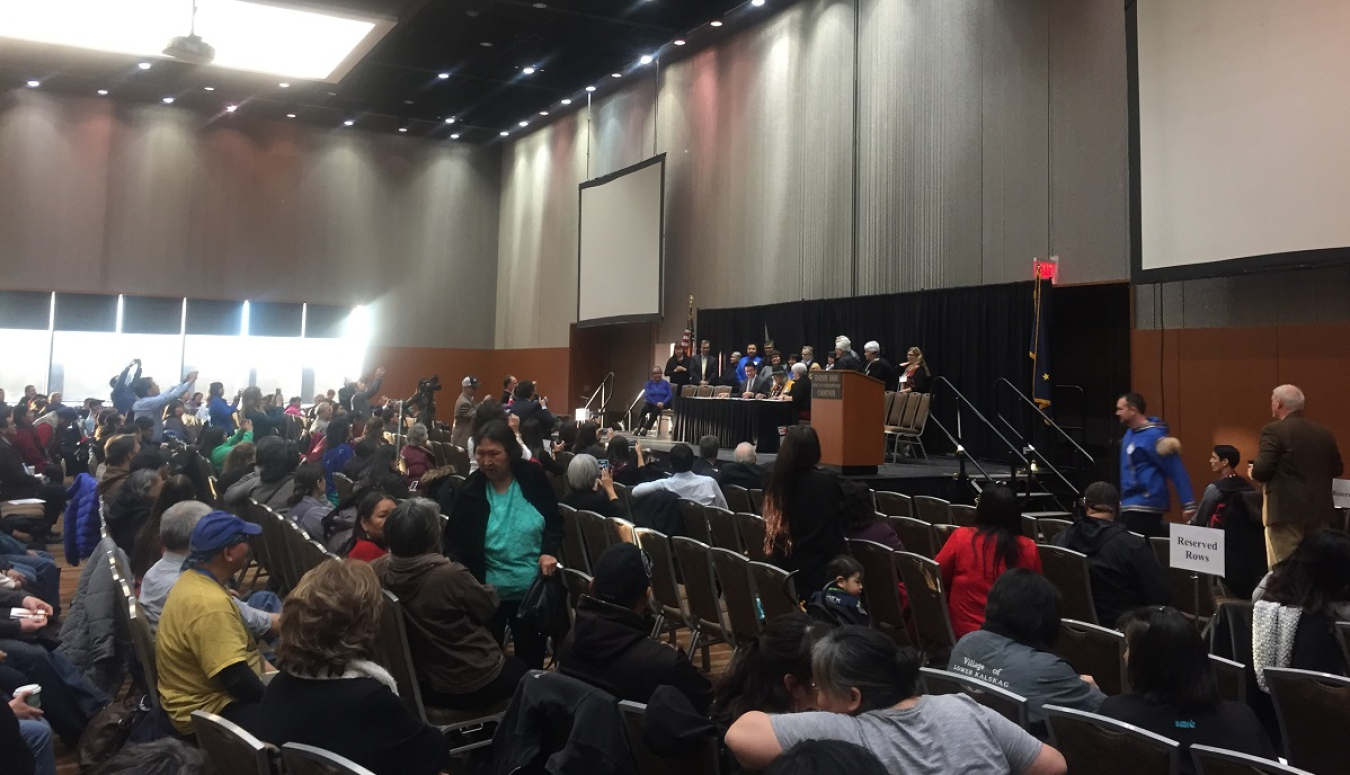Two former DOE interns conduct interviews on the challenges to developing renewable energy in Alaska Native communities.
Office of Indian Energy Policy and Programs
December 19, 2016
The Bureau of Indian Affairs (BIA) Providers Conference held in Anchorage, Alaska, Nov. 29 to Dec. 2, 2016, brought together an array of federal government agencies and state, tribal, and local representatives who serve Alaska Natives. As contractors to the U.S. Department of Energy (DOE) Office of Indian Energy, we attended this conference, in part to conduct interviews on the challenges to developing renewable energy in Alaska Native communities.
Many geographically remote Alaska Native villages rely on diesel shipments by air or by barge in order to supply heat and electricity. As a result, these villages often pay the highest costs for fuel and electricity in the United States, typically exceeding $10/gallon for diesel and $0.50/kilowatt-hour for electricity. The costs of staying warm and keeping the lights on can be debilitating for communities that have mixed cash/subsistence economies where heating and electricity costs for a single household can exceed $500 per month and per-capita incomes can be less than $20,000 per year. These diesel fuel shipments may also pose threats to energy security, as the shipments are susceptible to interruptions from weather and seasonal changes in sea ice. Repairs to diesel generators can also be complicated by these same challenges. By reducing reliance on these fuel shipments, renewable energy development and energy efficiency retrofits can provide a means of reducing electricity and heating costs and increasing energy security for these communities. However, renewable energy development and energy efficiency retrofits pose challenges of their own.
We wanted to better understand these challenges through the experience and perspectives of people that work in these communities. Therefore, we developed a set of questions based on an expert elicitation interview protocol called the Delphi method, which we used to conduct similar research that identified the barriers to development of renewable energy in the contiguous United States. This protocol is intended to ensure consistency across interviews and minimize factors that can influence an individual’s responses, such as leading questions or other cues by the interviewer. Over three days during the BIA Providers Conference, we interviewed 16 people who represented village and regional corporations, intertribal organizations, agencies of the state of Alaska, and federal representatives who work with villages on energy issues.
Early results indicate that the challenges are varied and, to some extent, present to varying degrees within each community. From a technical perspective, grids and powerhouses often require costly upgrades to incorporate intermittent electricity generation from renewable resources. Additionally, logistics and environmental conditions affecting transportation and construction can dramatically increase the cost of construction. In terms of the economics, financing and funding do not go as far in Alaska due to the high costs of transportation and the difficulties of obtaining economies of scale. From a societal perspective, there are significant human capacity gaps within communities due to the need for technical and financial education and training or simply a shortage of people to manage the multitude of nonenergy priorities within the community.
Through the interviews we conducted, we learned about a number of Alaska Native communities that, despite the northern latitudes and harsh climate, have successfully developed their renewable energy resources and the challenges they overcame to make those projects a reality. One of our interviews was particularly informative—both about developing a novel wind power-to-heat project and the participant’s experience of wrestling and choking a rabid wolf that tried to attack him (he did provide photographic evidence and the story was confirmed by five other individuals). We are still figuring out how we can best include this vignette in our final research report.
Alaska Native communities are faced with many challenges to developing their indigenous renewable energy resources and reducing energy consumption through efficiency. However, talking to individuals that have addressed these challenges provided great insight into the resiliency of Alaska Native communities. Our research is meant to explore gaps in the services DOE’s Office of Indian Energy and other federal and state agencies provide to Alaska Native communities and offer insight into how those unmet needs might be addressed. We will incorporate our findings into a comprehensive report to be published this spring.
Learn more about the resources available from the Office of Indian Energy to help develop sustainable energy strategies and implement viable solutions to community energy challenges in Alaska Native Villages.
More by these authors
-
 Energy Analyst and Project Monitor to the Office of Indian Energy Policy and Programs (Contractor)
Energy Analyst and Project Monitor to the Office of Indian Energy Policy and Programs (Contractor)


